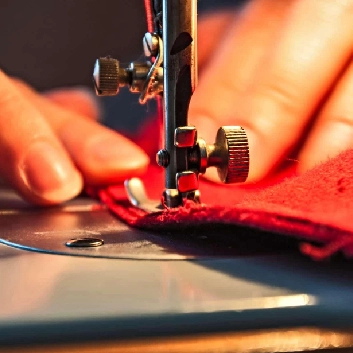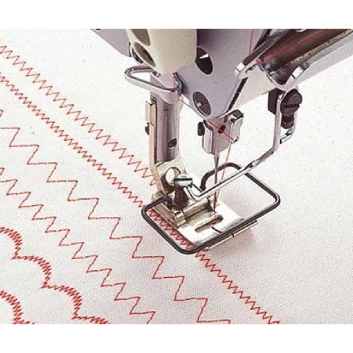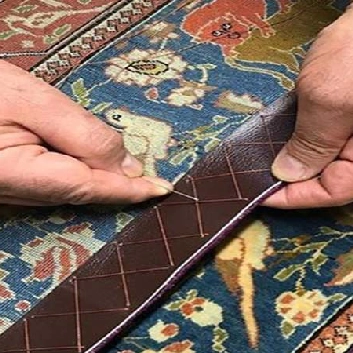

As an important technique in the sewing and weaving industry, zigzag stitching plays a fundamental role in the production of high-quality carpets. Zigzag stitching has gradually become one of the key elements in the carpet industry due to the beauty and special strength it gives to handmade and machine-made carpets. Throughout history, the zigzag technique has undergone many developments and has led to various styles and methods in the art of carpet weaving. In this article, we will examine the history of the use of zigzag stitching in the carpet industry and study its cultural influences and applications.
The history of the use of zigzag stitching dates back to ancient times and to Asian countries, especially Iran. During this period, weavers used various sewing techniques to increase the strength of their handmade carpets. Zigzag stitching, due to its unique design that resembles the letter “Z”, allows for the creation of curved lines and intricate designs. This feature allows weavers to produce beautiful, high-quality rugs that are both functional and aesthetically appealing.
Throughout the history of rug weaving, different cultures and artistic styles have influenced stitching techniques. For example, in Islamic and Iranian arts, intricate decorations and motifs have led weavers to use zigzag stitching to create geometric shapes and decorative designs. This stitching not only adds beauty, but also increases the durability of the rug by increasing its strength.
With the Industrial Revolution and the advent of weaving machines, the use of zigzag stitching expanded significantly. These machines allow weavers to create more complex patterns with greater precision and speed. Zigzag stitching was used as a suitable option to improve the strength of the stitching and increase the quality of machine-made carpets.
In recent decades, with technological advances, this stitching has been used in a more advanced way in machine-made carpets, producing more diverse and attractive patterns. You can see examples of zigzag carpets on the market that represent a combination of beauty and functionality.
Zigzag stitching is used not only in the production of handmade and machine-made carpets, but also in the manufacture of backings and other carpet accessories. This type of stitching can be used on a variety of materials due to its flexibility. For example, in the preparation of carpet backings with zigzag stitching, in addition to beauty, the final product also has greater durability and strength.
Categorizing the benefits of zigzag stitching can help weavers and artisans make better choices. Some of these benefits include the following:
Higher strength: Zigzag stitching prevents the carpet from stretching and tearing due to its special pattern.
Visual beauty: The zigzag design gives the carpet a special and modern look that attracts the attention of customers.
Ease of production: The use of advanced machinery has made the carpet production process faster and easier.

We recommend that you read the following:
The history of the use of zigzag stitching in the carpet industry shows the evolution of this technique over time. From ancient times to the present day, this type of stitching has helped improve the quality and beauty of carpets and continues to be recognized as a key component in the art of carpet weaving. With technological advances and increasing market needs, the use of zigzag stitching in the carpet industry will continue to grow and develop.
Zigzag stitching is a sewing technique that is designed in the shape of the letter “Z”. This type of stitching is used to increase the strength and beauty of machine-made and handmade carpets. Zigzag stitching is also used in the production of carpet accessories such as backs and small rugs.
The history of the use of zigzag stitching dates back to ancient times, especially in Asian cultures such as Iran. This technique has expanded significantly with the advancement of technology and the carpet industry, especially in machine-made carpets.
Yes, zigzag stitching is widely used in handmade carpets. This technique helps to produce carpets with beautiful designs and greater strength, especially in traditional and modern designs.
Zigzag stitching is widely used in modern and contemporary carpets that require complex and attractive designs. It is also used in traditional carpets in some patterns.
In some cases, the use of zigzag stitching may increase production costs. However, the unparalleled strength and durability of this technique can lead to savings in maintenance costs in the long run.


Best-selling products
About us
Before buying